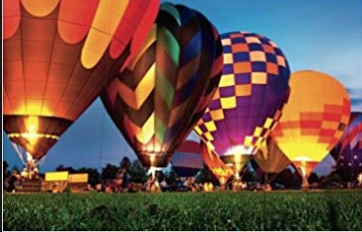
Baseball season is here! I’ve always enjoyed watching baseball; I even tried playing softball a few times in graduate school. But something always struck me as odd. No matter what, every time it was my turn at bat, I never saw the ball coming at me. Perhaps I closed my eyes. Perhaps I couldn’t track the ball that fast. Whatever it was, I was always at the mercy of that undergraduate who shouted, “Swing!” when the ball came near. I never actually hit the ball, and I realized later that the one shouting “swing” was playing for the other team, so she likely was not trying to be helpful.
I was reminded of this lackluster experience lately when I read about research that suggests that those playing well see the ball differently than those performing less well. In other words, not only do better players see the ball (which is already an improvement over my experience), they judge the ball to be bigger than those whose performance is lacking (Witt & Proffitt, 2005).
This altered perception is not just limited to softball and baseball. Researchers have also found that tennis players who are playing well perceive the net to be lower (Witt & Sugovic, 2010) and golfers who are playing well judge the hole as larger (Witt, Linkenauger, Bakdash, & Proffitt, 2008). It appears that what matters is not how good one is at performing the action generally, but how well one did on the day perception was assessed (Witt et al., 2008).
After multiple demonstrations revealed a correlational relationship between performance and perception, Witt and her colleagues wondered if you could change people’s perception and improve their performance. Witt, Linkenauger and Proffitt (2012) conducted an experiment in which they set up a putting green and with the help of an optical illusion (the Ebbinghaus illusion—see Figure 1), they created two holes that appeared to differ in size.
Figure 1: The Ebbinghaus illusion: Small or large circles surround a hole creating an illusion that makes the central holes appear different in size (in actuality, the holes are the same size).
Witt et al. (2012) found that perception influenced performance. Participants putting to a 5.08 cm hole surrounded by small versus large circles perceived the two holes as different in size, and they were more successful when putting to the hole that appeared larger.
Witt et al.’s (2012) finding suggests that, with the help of optical illusions, we can potentially influence performance. The idea that you can manipulate the way a target looks in an effort to improve one’s game is extremely exciting. As for me, all I need to do is to figure out how to put little circles around that baseball coming toward me when it’s my turn at bat. And I should probably ignore all encouragement to “swing!” coming from the other team. There may be hope for my game yet.
References
Witt, J. K., Linkenauger, S. A., Bakdash, J. Z., & Proffitt, D. R. (2008). Putting to a bigger hole: Golf performance relates to perceived size. Psychonomic Bulletin & Review, 15, 581-585. doi:10.3758/PBR.15.3.581
Witt, J. K., & Linkenauger, S. A., & Proffitt, D. R. (2012). Get me out of this slump! Visual illusions improve sports performance. Psychological Science, 23, 397-399. doi:10.1177/0956797611428810
Witt, J. K., & Proffitt, D. R. (2005). See the ball, hit the ball: Apparent ball size is correlated with batting average. Psychological Science, 16, 937-938. doi:10.1111/j.1467-9280.2005.01640.x
Witt, J. K., & Sugovic, M. (2010). Performance and ease influence perceived speed. Perception, 39, 1341-1353. doi:10.1068/p6699
Latest Comments
Have your say!